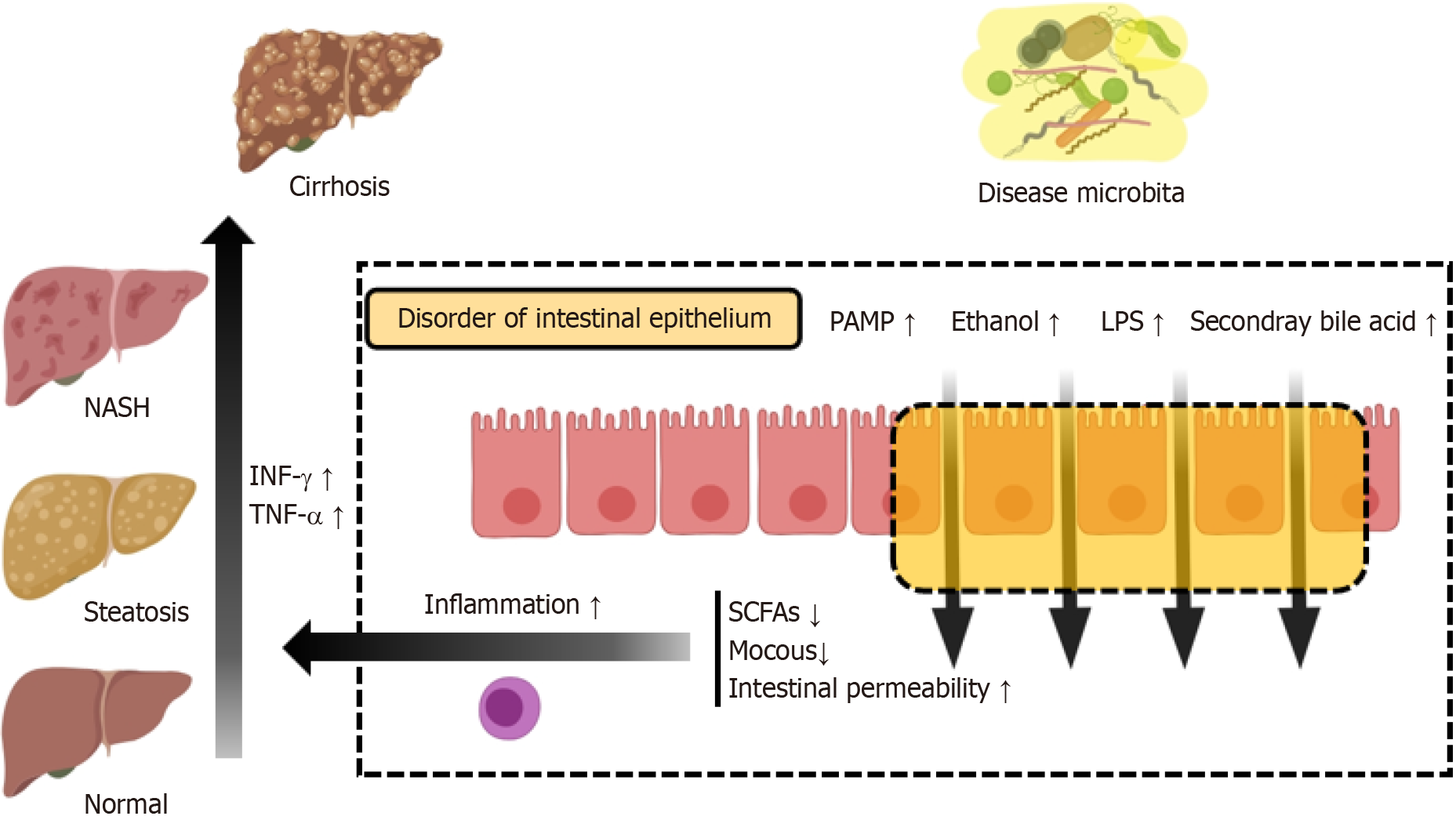Copyright
©The Author(s) 2024.
World J Hepatol. May 27, 2024; 16(5): 688-702
Published online May 27, 2024. doi: 10.4254/wjh.v16.i5.688
Published online May 27, 2024. doi: 10.4254/wjh.v16.i5.688
Figure 1 Disruption of intestinal mucosal barriers by pathogenic microorganisms.
Pathogenic microorganisms elevate levels of pathogen-associated molecular patterns, lipopolysaccharide, ethanol, and secondary bile acids in the intestinal mucosa, leading to a decrease in protective intestinal mucus and short-chain fatty acids. This exacerbates local inflammation and enhances intestinal permeability. As a result, pathogenic microorganisms and their virulence factors are transported to the liver via the portal venous system, facilitating the progression of non-alcoholic fatty liver disease. PAMP: Pathogen-associated molecular; LPS: Lipopolysaccharide; NASH: Non-alcoholic steatohepatitis; TNF-α: Tumour necrosis factor alpha; INF: Interferon; SCFAs: Short-chain fatty acids.
- Citation: Mei EH, Yao C, Chen YN, Nan SX, Qi SC. Multifunctional role of oral bacteria in the progression of non-alcoholic fatty liver disease. World J Hepatol 2024; 16(5): 688-702
- URL: https://www.wjgnet.com/1948-5182/full/v16/i5/688.htm
- DOI: https://dx.doi.org/10.4254/wjh.v16.i5.688









